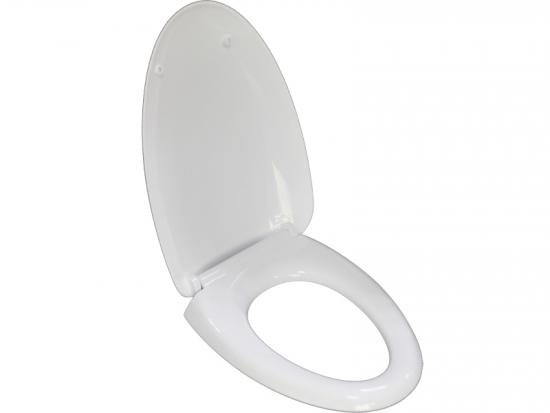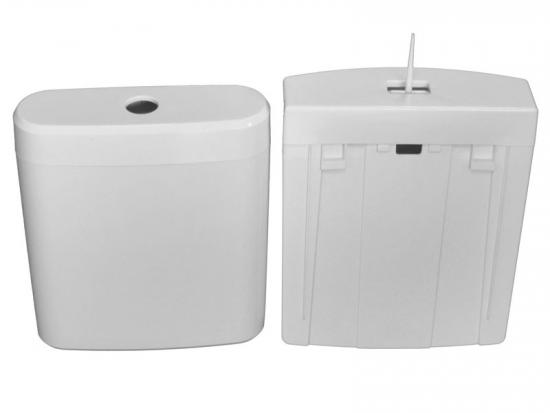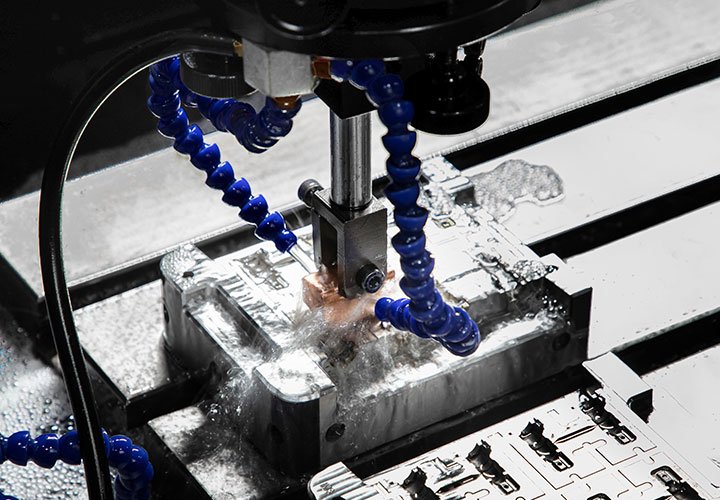Injection molding stands as a cornerstone in the production of sanitary ware, offering unparalleled efficiency and precision. This article delves into the fundamentals of injection molding in sanitary ware production, elucidating its benefits, applications, design considerations, quality control measures, environmental aspects, and future trends.
Understanding the Basics of Injection Molding
1. Process Overview
Injection molding involves injecting molten material into a mold cavity, where it solidifies to form the desired shape. The process begins with the melting of thermoplastic or thermosetting materials, followed by injection into a mold under high pressure. Once the material cools and solidifies, the mold opens, releasing the molded product.
2. Materials Used
Various materials are utilized in injection molding for sanitary ware, including polypropylene (PP), acrylonitrile butadiene styrene (ABS), polyethylene (PE), and polyvinyl chloride (PVC). These materials offer a balance of durability, chemical resistance, and aesthetics required for sanitary applications.
3. Equipment Involved
Injection molding machines comprise several components, including the injection unit, clamping unit, mold, and control system. These machines vary in size and complexity, accommodating different production requirements and material specifications.
Advantages of Injection Molding in Sanitary Ware Production
Cost Efficiency
Injection molding enables high-volume production at low unit costs, making it economically viable for sanitary ware manufacturers. The automated nature of the process reduces labor costs while minimizing material wastage, further enhancing cost efficiency.
Precision and Consistency
The precision and consistency offered by injection molding ensure uniformity in product dimensions and surface finish. Tight tolerances can be maintained, resulting in sanitary ware products with accurate shapes and dimensions.
Versatility in Design
Injection molding offers unparalleled design flexibility, allowing for intricate shapes, complex geometries, and customizable features. Manufacturers can adapt designs to meet diverse consumer preferences and market demands, facilitating innovation in sanitary ware products.
Common Applications of Injection Molds in Sanitary Ware
Toilet Seats
Injection molding is widely employed in the production of toilet seats, enabling the manufacture of durable, hygienic, and aesthetically pleasing products. Various materials and design options cater to different toilet configurations and user preferences.
Washbasins and Sinks
Washbasins and sinks benefit from injection molding’s versatility, allowing for the seamless integration of functional features and aesthetic elements. The process facilitates the production of smooth, non-porous surfaces that are easy to clean and maintain.
Bathtubs and Shower Trays
Injection molding enables the fabrication of bathtubs and shower trays with precise contours, ergonomic designs, and structural integrity. Manufacturers can produce lightweight yet durable products that meet stringent quality and safety standards.



Design Considerations for Injection Molded Sanitary Ware
Mold Design
Optimizing mold design is critical for achieving desired product characteristics and minimizing manufacturing defects. Factors such as mold material, cooling system, and part ejection mechanism influence product quality and production efficiency.
Material Selection
Choosing the right material is paramount in injection molding, considering factors such as chemical resistance, impact strength, and surface finish. Material selection should align with performance requirements, regulatory compliance, and market preferences.
Structural Integrity
Ensuring structural integrity is essential for injection molded sanitary ware to withstand mechanical stresses, temperature variations, and chemical exposure. Design considerations such as ribbing, wall thickness, and reinforcement enhance product durability and longevity.
Quality Control and Testing in Injection Molded Sanitary Ware
Dimensional Accuracy
Maintaining dimensional accuracy is crucial in injection molding to meet product specifications and performance standards. Advanced metrology techniques, including coordinate measuring machines (CMM) and optical scanners, verify part dimensions and geometric tolerances.
Surface Finish
Achieving a smooth, defect-free surface finish enhances the aesthetic appeal and functionality of injection-molded sanitary ware. Surface treatments such as polishing, texturing, and coating improve surface quality while mitigating imperfections and blemishes.
Durability Testing
Conducting durability tests assesses the performance and reliability of injection molded sanitary ware under simulated operating conditions. Mechanical, thermal, and chemical tests evaluate product strength, stability, and resistance to wear and degradation.
Environmental Considerations and Sustainability
Material Recycling
Promoting material recycling and reuse reduces the environmental impact of injection molded sanitary ware production. Closed-loop recycling systems and eco-friendly materials minimize resource depletion and waste generation, fostering a circular economy.
Energy Efficiency
Adopting energy-efficient manufacturing processes and equipment lowers greenhouse gas emissions and energy consumption. Optimizing process parameters, implementing renewable energy sources, and utilizing energy recovery systems contribute to sustainable production practices.
Waste Reduction
Implementing waste reduction strategies, such as lean manufacturing principles and zero-waste initiatives, minimizes material scrap and landfill disposal. Recycling waste materials, optimizing production layouts, and reducing packaging contribute to a more sustainable manufacturing ecosystem.
Future Trends and Innovations in Injection Molded Sanitary Ware
Smart Technologies Integration
Integrating smart sensors, connectivity solutions, and IoT-enabled devices enhances the functionality and usability of injection molded sanitary ware. Smart toilets, faucets, and showers offer personalized experiences, water conservation features, and remote monitoring capabilities.
Sustainable Materials Development
Continued research and development efforts focus on sustainable materials derived from renewable sources, biodegradable polymers, and recycled plastics. Eco-friendly alternatives to conventional materials reduce environmental impact and promote resource conservation in sanitary ware production.
Customization and Personalization
Advancements in digital design tools, 3D printing technologies, and mass customization techniques enable personalized sanitary ware solutions. Customizable fixtures, fittings, and accessories cater to individual preferences, design aesthetics, and ergonomic requirements.
Conclusion
In conclusion, injection molding plays a pivotal role in the production of sanitary ware, offering cost-effective, precise, and versatile manufacturing solutions. By leveraging advancements in materials, design, quality control, and sustainability, manufacturers can meet evolving consumer demands while minimizing environmental impact and fostering innovation in the sanitary ware industry.
FAQs (Frequently Asked Questions)
1. Can injection molding be used for small-scale production of sanitary ware?
Yes, injection molding can be utilized for small-scale production of sanitary ware, offering cost-effective manufacturing solutions even for limited quantities.
2. How does injection molding compare to other manufacturing processes in terms of cost?
Injection molding generally offers lower unit costs compared to other manufacturing processes due to its high efficiency, minimal material wastage, and automation capabilities.
3. What are some common defects in injection molded sanitary ware and how can they be prevented?
Common defects include sink marks, warpage, flash, and flow marks. These can be prevented through proper mold design, material selection, process optimization, and quality control measures.
4. Are there regulations or standards governing the production of injection molded sanitary ware?
Yes, there are regulatory standards such as ISO 9001 for quality management and ASTM International standards for material properties and performance. Additionally, local regulations may apply to ensure product safety and compliance.
5. What advancements are expected in injection molding technology for sanitary ware in the near future?
Advancements may include the integration of smart technologies for enhanced functionality, the development of sustainable materials, and the implementation of advanced design and customization capabilities.

